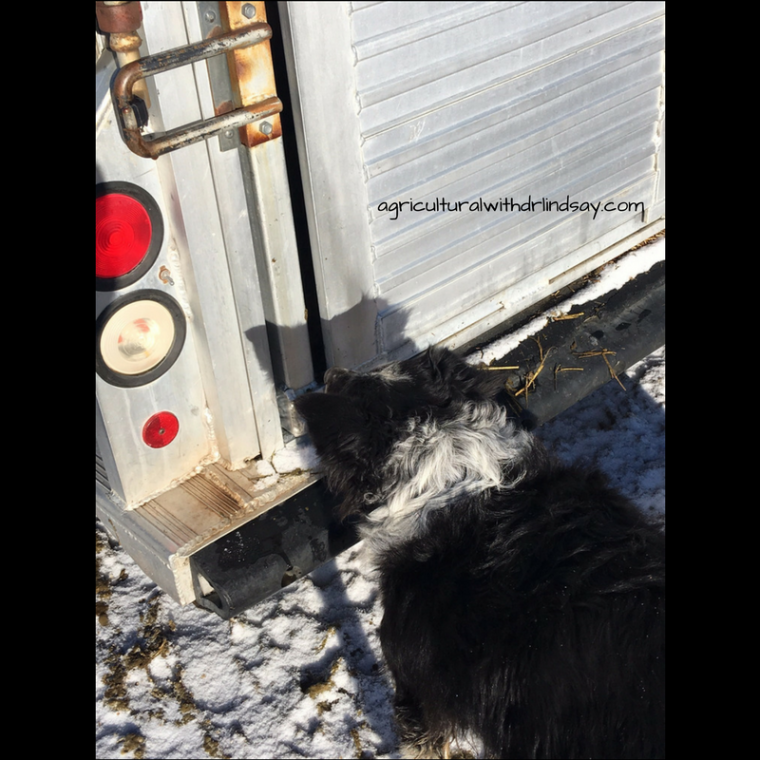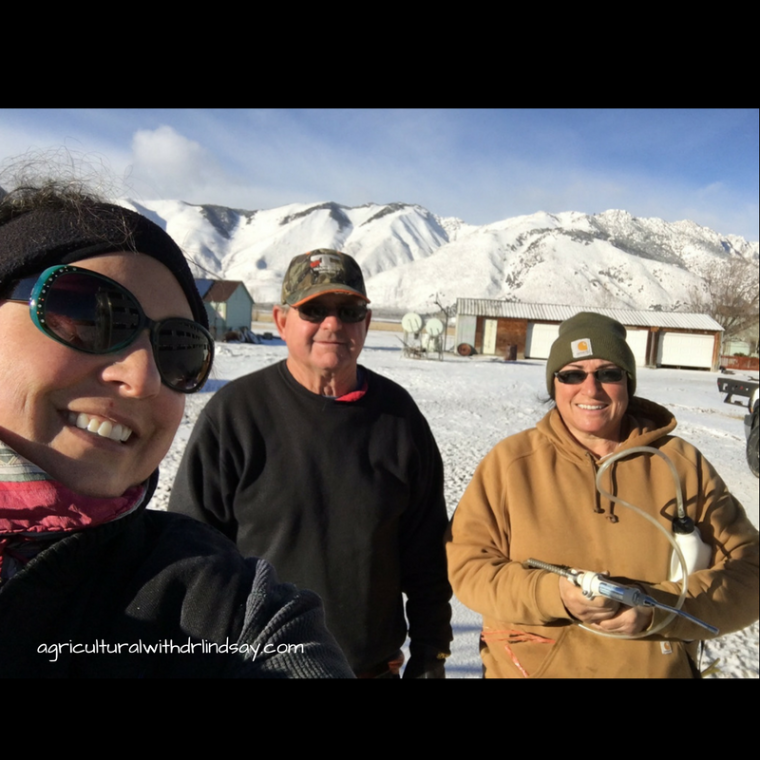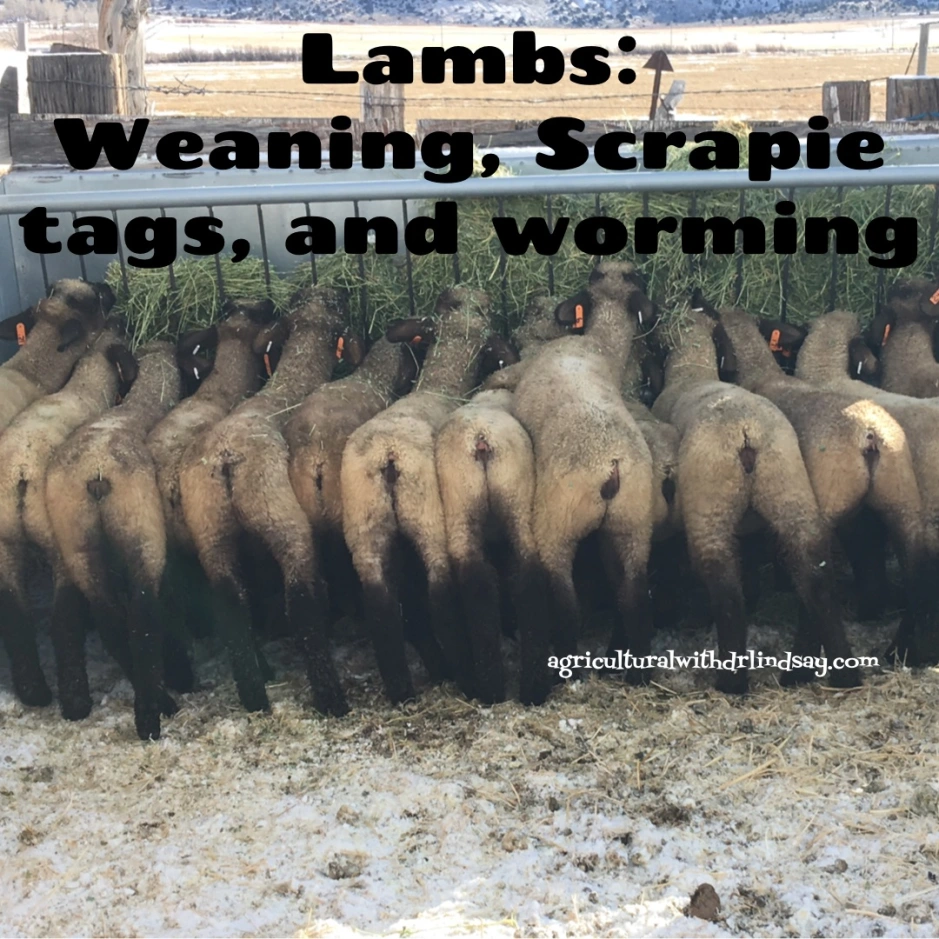This past weekend I headed out to the ranch to help wean lambs. Weaning just means that they have become old enough and/or weigh enough to be able to flourish on their own, so they are separated from their mothers. For lambs, our rule of thumb is 60 days or 60 pounds, meaning they must be at least 60 days old to be weaned or weigh at least 60 pounds.
The ewes (the mamas) can start getting thin at this stage because these bigger lambs are still nursing and the ewes have a hard time maintaining their body weight and condition with these big lambs nursing them. The lambs at this age and stage are also eating hay and can graze, so it is time for them to be weaned. Plus, in a few short weeks excited 4-H members will come and select the lambs they will raise and show this year.
We sorted the lambs into two pens, one pen held lambs that met the 60/60 requirements and the other pen held the lambs that still need more time. Twenty-nine lambs were sorted into our wean pen and everyone else was let out to go eat their morning hay.
Luckily we started early enough in the morning the ground was still frozen and we could get the horse trailer backed up to the shed. We have gotten so much moisture in the last month that there is mud that is at least ankle deep. Once the horse trailer was in place we let the lambs out of their pen and they ran right to the trailer and loaded (yay for this going so well).

Now since we had them in a confined space (i.e. the horse trailer) we wormed them (they can get internal parasites from drinking out of running water sources, worming helps keep them healthy) and they got their Scrapie tags. Scrapie (pronounced scrape – e) is a fatal, degenerative disease of the central nervous system of sheep and goats, of which there is no cure. Other animal species can get a form of this prion misfolding disease too. In cattle it is bovine spongiform encephalopathy (BSE or “Mad Cow Disease”), in people it is variant Creutzfeldt-Jakob Disease (vCJD). The USDA (United States Department of Agriculture) has a national scrapie eradication program, and each state department of agriculture has a premise identification program. In the premises ID program, each animal rancher/farmer verifies what their address is and what species they raise. Before sheep (or goats) can leave where they were born they must be tagged with one of these tags, if there ever was a Scrapie outbreak, the animal could be traced back to its home ranch/farm. Fun fact – it is illegal to remove the Scrapie tag before an animal is harvested. That tag must remain in the animal’s ear for its entire life.

Once each lamb had been wormed and tagged with the Scrapie tag, the lambs were taken to their new home. A pen near where they had always been. They will stay in this pen until they go to a new home with the 4-H members, until any replacement ewes are big and mature enough to rejoin the flock, or they are harvested for meat. In this pen they have access to alfalfa hay, grain, and fresh clean water, as well as two sheds.

It usually takes a couple of days for the lambs and ewes to recover from weaning. The lambs learn how to eat hay and grain out of feeders and the ewes have a chance to start putting some weight back on that they may have lost while nursing. If the ewes get too thin they have a hard time cycling and breeding again.
Weaning lambs is a lot of work that requires all of us to get it done. But it is also rewarding because you can really see how well the lambs are doing and have pride in knowing that under your care they will reach their full potential.

——————–
Dr. Lindsay can also be found on:
– Twitter/Instagram (agwithdrlindsay)
– Facebook
– Pinterest


I have never been around sheep, so I learned a lot from this. What made me smile was reading about the 4-H members coming soon to select their lambs! Our kids did 4-H hogs and calves, so 4-H is near and dear to our hearts. Since we don’t raise hogs here, we went to a neighbor’s house to select them each year. The livestock auction helped pay for our kids’ college educations. Several of our community 4-H club’s bucket calves have come from the County Line, too.
Thanks Kim. We showed cattle and sheep in 4-H, never got into the hogs. The livestock auctions helped pay for our (my sister and I) educations too. Didn’t have to take out student loans until I started grad school. 🙂